The Keys to Using Feng Shui In Your Interior Decor
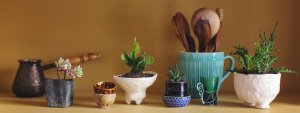
Feng Shui is an ancient art form that’s used in interior decor. In simple terms, this practice can be represented by a spiral in constant rotation. Each turn of this spiral arises from the one that came before it. In decoration, the first round of the Feng Shui spiral is “to organize your outer world to develop your inner world”. The second is “to organize your outer world to enhance your inner world”, and so on.
The idea behind the art of Feng Shui is that places can influence our lives. It’s an incredible philosophy that deals with the relationships between the visible and the invisible forces in our world. For example, in Feng Shui, living rooms are closely associated with the fire element and are the perfect place to express yourself and display artwork.
Feng shui decoration – light and ventilation
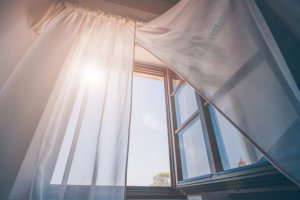
Let’s start with the basics. Light has a special place in Feng Shui. This art form demands that rooms receive the perfect amount of light, preferably natural. In Feng Shui, there should be no furniture or decorative elements that hinder the passage of light. No objects should be placed in front of the windows, and it’s important to make sure that there are no dark, unlit corners.
Good ventilation in the home is as, if not more, important than the lighting. Making sure to air your rooms regularly prevents accumulated energy from stagnating. We highly recommend opening the windows while cleaning and after a hot bath or shower.
Bathrooms
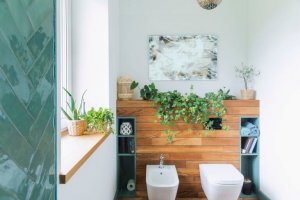
In the art of Feng Shui, there’s a very old and popular belief that says that bathrooms are the focus of financial problems in the home. It’s believed that vital energy can escape through the plumbing, taking with it valuable resources.
It’s important to keep pipes and drains covered when not in use. The toilet lid should always be closed, as well as the bathroom door. It’s firmly believed that all the Chi in your home can quickly escape via these drains if you’re not careful.
The main element in any bathroom is water. It’s important to make sure that it’s balanced with both fire and earth. To do this, you can include clay or wood accessories and fittings in your bathroom decor, as well as candles and plants.
Feng shui and staircases
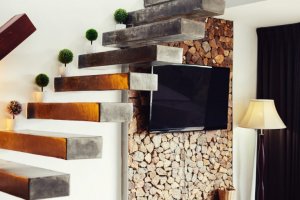
In terms of energy, the stairs are one of the most difficult areas of the house to decorate. According to Feng Shui, stairs act almost like waterfalls, sweeping life energy rapidly from one floor to the next.
It’s especially difficult if the stairs lead to an exit, as they then channel the vital energy straight out of the house. If you want to use Feng Shui in your home, you need to find ways to compensate for this energy loss. The longer and steeper they are, the more careful you have to be.
One popular strategy is to place a large mirror opposite the stairs. Its reflection symbolically “hunts down” the energy and bounces it back up to the second floor.
If your bathroom is at the top of the stairs, you can restore the flow of energy by placing a low piece of furniture (beige or pastel-colored) next to the bathroom door, and as directly opposite the staircase as possible. You should decorate it with plants, preferably a bromeliad.
Water features
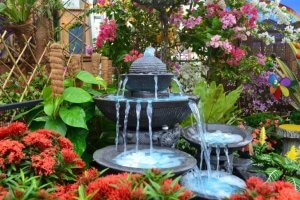
A house organized according to the principles of Feng Shui must have a water feature. Ideally, this should be a decorative water fountain that allows the water to flow continuously. If that’s not an option, you can compensate with paintings and photos featuring water, or any elements that symbolize water. One example might be crystal decorations.
Bed location
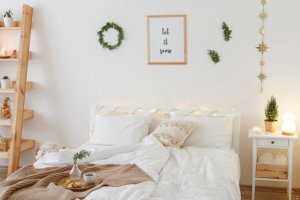
When it comes to locating your bed, the basic rule is that you should be able to see it as soon as you walk in the room, without it being directly opposite the door. If it is, you can place a low piece of furniture between the door and the bed. This could be a trunk, an ottoman, a “bedroom bench” or some other piece of furniture.
According to Feng Shui, there shouldn’t be too many mirrors in bedrooms. Mirrors activate the energies within the room and can disturb your sleep, causing restlessness and insomnia. The bigger they are and the closer they are to the bed, the more they will affect the quality of your sleep.
In terms of orientation, many people believe that the head of the bed should be pointing north, but this isn’t the case. In bedroom Feng Shui, orienting the bed in different directions has different benefits.
Sleeping with your head pointing north reinforces health and vitality. If you sleep with your head pointing south, it promotes intuition, while stimulating dreams and memory. Sleeping with your head facing the west slows your body rhythms, which can be useful in stressful situations. Facing east can increase your energy, helping you to overcome laziness.
Feng Shui is an ancient art form that’s used in interior decor. In simple terms, this practice can be represented by a spiral in constant rotation. Each turn of this spiral arises from the one that came before it. In decoration, the first round of the Feng Shui spiral is “to organize your outer world to develop your inner world”. The second is “to organize your outer world to enhance your inner world”, and so on.
The idea behind the art of Feng Shui is that places can influence our lives. It’s an incredible philosophy that deals with the relationships between the visible and the invisible forces in our world. For example, in Feng Shui, living rooms are closely associated with the fire element and are the perfect place to express yourself and display artwork.
Feng shui decoration – light and ventilation

Let’s start with the basics. Light has a special place in Feng Shui. This art form demands that rooms receive the perfect amount of light, preferably natural. In Feng Shui, there should be no furniture or decorative elements that hinder the passage of light. No objects should be placed in front of the windows, and it’s important to make sure that there are no dark, unlit corners.
Good ventilation in the home is as, if not more, important than the lighting. Making sure to air your rooms regularly prevents accumulated energy from stagnating. We highly recommend opening the windows while cleaning and after a hot bath or shower.
Bathrooms

In the art of Feng Shui, there’s a very old and popular belief that says that bathrooms are the focus of financial problems in the home. It’s believed that vital energy can escape through the plumbing, taking with it valuable resources.
It’s important to keep pipes and drains covered when not in use. The toilet lid should always be closed, as well as the bathroom door. It’s firmly believed that all the Chi in your home can quickly escape via these drains if you’re not careful.
The main element in any bathroom is water. It’s important to make sure that it’s balanced with both fire and earth. To do this, you can include clay or wood accessories and fittings in your bathroom decor, as well as candles and plants.
Feng shui and staircases

In terms of energy, the stairs are one of the most difficult areas of the house to decorate. According to Feng Shui, stairs act almost like waterfalls, sweeping life energy rapidly from one floor to the next.
It’s especially difficult if the stairs lead to an exit, as they then channel the vital energy straight out of the house. If you want to use Feng Shui in your home, you need to find ways to compensate for this energy loss. The longer and steeper they are, the more careful you have to be.
One popular strategy is to place a large mirror opposite the stairs. Its reflection symbolically “hunts down” the energy and bounces it back up to the second floor.
If your bathroom is at the top of the stairs, you can restore the flow of energy by placing a low piece of furniture (beige or pastel-colored) next to the bathroom door, and as directly opposite the staircase as possible. You should decorate it with plants, preferably a bromeliad.
Water features

A house organized according to the principles of Feng Shui must have a water feature. Ideally, this should be a decorative water fountain that allows the water to flow continuously. If that’s not an option, you can compensate with paintings and photos featuring water, or any elements that symbolize water. One example might be crystal decorations.
Bed location

When it comes to locating your bed, the basic rule is that you should be able to see it as soon as you walk in the room, without it being directly opposite the door. If it is, you can place a low piece of furniture between the door and the bed. This could be a trunk, an ottoman, a “bedroom bench” or some other piece of furniture.
According to Feng Shui, there shouldn’t be too many mirrors in bedrooms. Mirrors activate the energies within the room and can disturb your sleep, causing restlessness and insomnia. The bigger they are and the closer they are to the bed, the more they will affect the quality of your sleep.
In terms of orientation, many people believe that the head of the bed should be pointing north, but this isn’t the case. In bedroom Feng Shui, orienting the bed in different directions has different benefits.
Sleeping with your head pointing north reinforces health and vitality. If you sleep with your head pointing south, it promotes intuition, while stimulating dreams and memory. Sleeping with your head facing the west slows your body rhythms, which can be useful in stressful situations. Facing east can increase your energy, helping you to overcome laziness.







